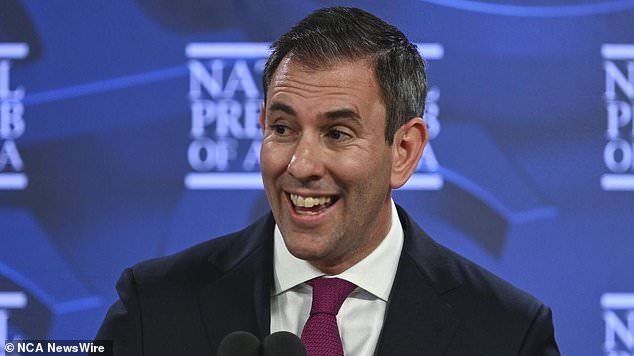Centrelink boost: JobSeeker, Youth Allowance and partnered parenting payment to increase in cost-of-living relief
Centrelink Boost: Jobseekers, Youth Benefits and spousal support payments to increase cost of living
- Cost of living for millions
- Jim Chalmers said Australians were ‘under the pump’
Billions of dollars in ‘targeted’ and ‘responsible’ living costs will flow this month to millions of Australians who feel they are in a pinch at the checkout or paying their bills.
While the latest data from the Australian Bureau of Statistics shows that inflation is moderating – up 4.9 per cent in the year to July, but down from 5.4 per cent the month before – Treasurer Jim Chalmers said people across the country were “under the pump.”
As of September 20, more than one million Australians on income support will benefit from the largest series of permanent increases (outside of the Covid pandemic) in 14 years, with payments increasing $40 every two weeks for approximately 782,000 people on JobSeeker; for approximately 222,000 Australians on youth benefits; and for 64,000 families with a partner alimony payment.
Single parents will no longer be cut off from government assistance after their youngest child turns eight starting Sept. 20, with single parental benefits now continuing until that child is 14 — it’s estimated that about 57,000 families will benefit from an additional $176.90 per year. two weeks.
Billions of dollars in ‘targeted’ and ‘responsible’ living expenses will flow this month to millions of Australians who feel trapped at the checkout or paying their bills (stock image)
And the 1.1 million Australian households with access to Commonwealth housing benefit will be supported by a 15 percent increase to the maximum rate – the largest in more than 30 years, as well as the September 20 CPI increase.
Dr. Chalmers said the measures — which will cost the government $4.7 billion — were “what people need, when they need it most,” and would not add to inflation.
“Whether it’s cheaper medicines, more support to pay the bills or a little help to pay the rent, these policies and programs are designed to take the pressure off in the toughest times,” he said.
In addition, millions of Australians with chronic health conditions now have access to a 60-day supply of some medicines – effectively cutting the cost of their medicines in half – after the policy came into effect on September 1.
Health Minister Mark Butler said cheaper medicines are not only good for Australians’ health, but also “good for the waist bag”.

While the latest data from the Australian Bureau of Statistics shows that inflation is moderating – up 4.9 per cent in the year to July, but down from 5.4 per cent the month before – Treasurer Jim Chalmers (pictured) said people across the country were “under the pump.”
“Retirees with heart disease, children with Crohn’s disease, veterans with high cholesterol, mothers with osteoporosis and fathers with high blood pressure will receive significant cost-of-living relief,” he said.
“Every Australian will benefit from freeing up millions of much-needed GP visits, giving our doctors more time to diagnose and treat conditions, rather than simply issuing routine, repetitive scripts.”
Social Services Minister Amanda Rishworth said Labor is delivering on its pledge to “build a strong social safety net” for those who need it.
“We will always work to provide Australians with a strong safety net when they need it most,” she said.
The series of measures that will take effect in September follow a number of interventions in July, including cheaper childcare for 1.2 million families, a 15 percent wage increase for 250,000 aged care workers and a reduction in energy bills for lower-income households and businesses.
